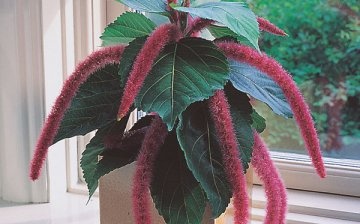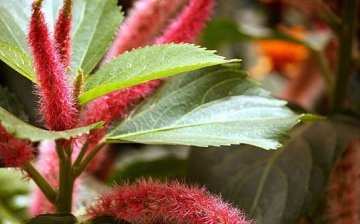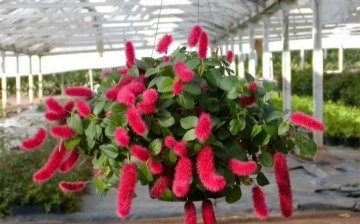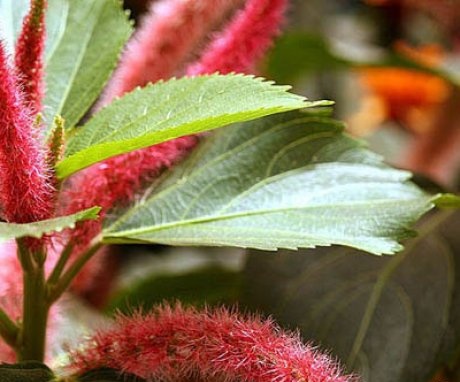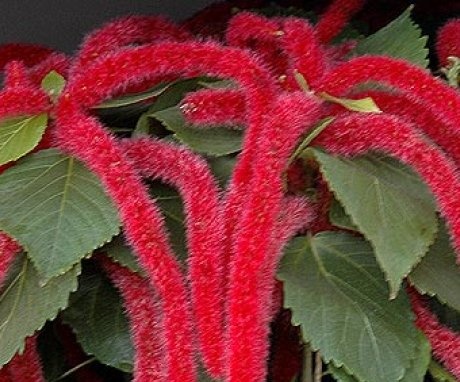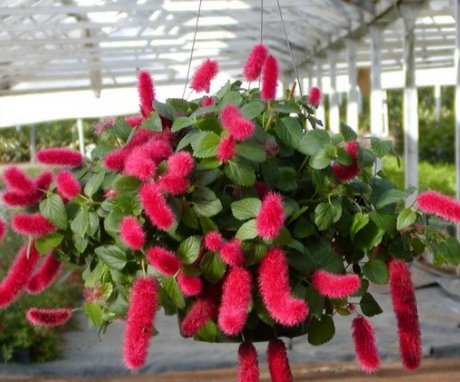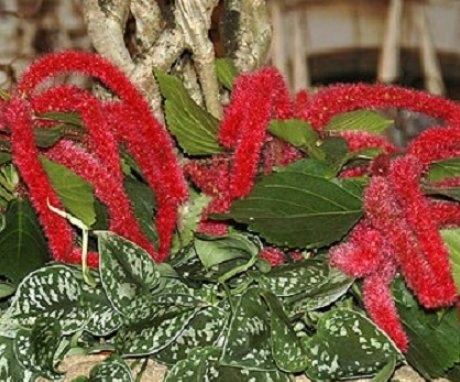Akalifa bristly-haired - species, cultivation and pest control
Akalifa - refers to perennial evergreens, belongs to the euphorbia family. Flowers are a distinctive feature of this plant. They look like long fluffy spikelets hanging down, their length is from 5 to 50 cm. In nature, akalifa grows up to 3 meters in height. It is considered its homeland in the tropical and subtropical regions of Asia, and it is also found in America. Akalifa grows as a perennial herb, shrubs and trees that are rare.
Content:
Types of akalifa
The most popular plant species:
- Akalifa is bristly haired. Grows in the form of a bush, perennial... Popularly called the fox tail for fluffy and long crimson inflorescences. The branches of the bush extend 3 m in height. Drooping inflorescences can reach 0.5 m in length. The leaves are large, serrated, pointed at the end, have pronounced red veins. Their surface is matte, they are painted in a dark green tone. This type of akalifa is grown in cold regions only in indoor or greenhouse conditions. The plant does not tolerate cold well and dies even with light frosts.
- Akalif Vilkeza. The plant of this species grows as a perennial shrub, the branches of which can stretch up to 3 m in height. Stems are erect, slightly pubescent, strong. The leaves are large, in an adult state, their size reaches 20 cm in length and 13 cm in width. The shape is oval, they are pointed at the ends, they have teeth at the edges. Their color is beautiful and decorative. The leaf surface has a bronze-green hue, covered with copper and red spots. Blooms in small inflorescences up to 10 cm in length.
- Akalifa southern. This species belongs to annuals. The stems of this plant have a ribbed shape, stretch up to 0.5 m in height, branch and have a slight pubescence along their entire length with hard hairs. The leaves are small, oval, with a pointed end and ribbed edges. Painted in green, matte. Spike-shaped inflorescences are located on a small peduncle, painted in light pink tones. Flowering begins in July and lasts until the end of August.
- Akalifa is Indian. It is a small one-year-old shrub up to 50 cm in height. Stems are small, strong, weakly branching. The leaves are small, oval, serrated along the edges with a pointed end, 5 veins are pronounced at the base. Spike inflorescences are small, up to 7 cm in length. Flowering begins in July and can last until mid-autumn.
- Akalifa Haitian. This species has creeping stems. The leaves are small, oval, serrated at the edges. Arranged on the branches alternately. Spike-shaped inflorescences grow up to 10 cm in length, drooping, fluffy, painted in a bright crimson tone. This kind is used in landscape design as a groundcover.
Plant care
Akalifa is a tropical plant, therefore it is recommended grow in well-lit rooms. In winter, the plant can be exposed to the sun. In the summer, the flower is shaded, when planting, they choose a place where direct sunlight will minimally hit the leaves of the akalifa.
The soil should be slightly acidic and well fertilized. In empty soils, the plant will be small and weakly flowering and without feeding will quickly die. A good layer of drainage is poured into the pots, peat, sand and turf soil are mixed.
For perennial species growing in rooms and greenhouses, it is recommended to maintain a temperature regime:
- In winter, the temperature should not drop below 17 degrees.
- The optimum ambient temperature should be between 22-25 degrees.
Watering plants:
- Watering must be taken especially carefully. The soil should be constantly moist, but the plant should not be poured. Therefore, the watering process is carried out as the soil dries out.
- In winter, it is reduced.
- Also, during the operation of heating units, it is recommended to regularly spray the flower from a spray bottle with water at room temperature.
- You can also temporarily place the pot on a pallet of damp sand or moss.
Every year in the spring and summer, when the plant is in the phase of active growth, it is recommended to apply mineral and organic fertilizers. Feeding is carried out once every 2 weeks.
Transplant adult plants as needed.
You can also leave the bush in the old tub, changing only the top of the soil. To do this, it is loosened and carefully removed in parts so as not to damage the root system. Fertilizers are applied to the remainder, and the rest is filled with prepared substrate. Young plants are transplanted annually up to 5 years of age. In this case, each time the diameter of the pot increases and the soil is completely replaced.
Gardeners recommend rejuvenating the bush once 4-5 years. In this case, the bush is pruned. The entire above-ground part is shortened so that branches remain up to 30 cm from the ground.
Reproduction of akalifa bristly hairy
Akalifa can be propagated with cuttings and seeds... When propagating by seeds, you must first prepare the soil. To do this, mix sheet earth and sand in equal parts. Such a composition will allow young sprouts to break through easily.
Seeds are sown in early spring.
The container is covered with foil or glass and transferred to a room where the ambient temperature is in the range of 20-23 degrees. After a time, when the seeds hatch and get stronger, they can be dived into separate containers.
Propagation using cuttings:
- Cuttings spend in the spring for flowering species. Varieties with decorative leaves and nondescript flowers can be propagated all year round.
- Healthy, strong, lignified branches are selected, from which cuttings from the upper shoots are cut.
- For rooting, a substrate is prepared by mixing peat and sand in equal parts.
- The cuttings are buried in the soil at a short distance from each other.
- Are covered with a greenhouse.
- The container is transferred to a room where the temperature is maintained within 23-25 degrees.
Cuttings need to be looked after. They are regularly sprayed with water at room temperature and ventilated. When new leaves begin to form on the branches, this is an indicator of successful rooting. After a while, young plants can be transplanted into separate pots. Many gardeners recommend planting 2-3 cuttings in one container, then the young bush will be lush in the first year. For young plants, the same care as for adults. After 6 weeks it is necessary to pinch the tops to stimulate branching and strengthen the root system.
Diseases and pests
Akalifu can be attacked by the same pests, like other plants. These are aphids, spider mites and whiteflies. When the first signs appear, flower growers recommend first of all resorting to folk methods of treatment. To do this, the whole plant is treated with soapy water several times in a period of 1 week. If necessary, resort to special drugs.
Akalifa is resistant to disease, the main signs of the disease appear with improper care.
So, if the leaves begin to wilt, this is an indicator of excessive or, on the contrary, too poor watering. Wilting can also occur if the flower grows in heavy soil.
If the color of the leaves fades in decorative deciduous varieties, this indicates a lack of light. If the edges of the leaves dry out, it is necessary to moisten the plant more intensively with a spray bottle.
More information can be found in the video.



